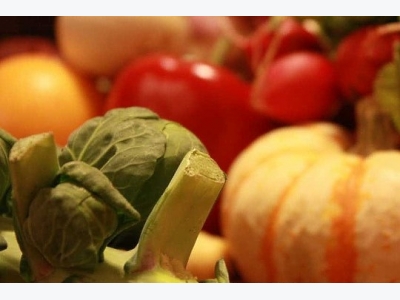Potential for organic production in EU continued to rise

Organic production in the European Union (EU) comes from fully converted areas.
This is according to the newest Eurostat data. The area under conversion as a percentage of the total organic area can give an indication of the potential growth in the organic sector in the years to come.
In 2016 only the United Kingdom had a share of less than 10%, while ten EU Member States had shares between 10% and 20% and fifteen exceeded 20%. The largest shares were recorded for Bulgaria (77.5%), Croatia (68.8%) and Hungary (51.0%).
Organic production area is divided into three main crop types: arable land crops (mainly cereals, fresh vegetables, green fodder and industrial crops), permanent grassland (pastures and meadows), and permanent crops (fruit trees and berries, olive groves and vineyards).
Pasture and meadows (mostly used for grazing organic livestock) exceeded 5 million ha, which represented 45.1% of the EU-28 total organic crop area. Arable crops followed closely with 44.0%, while permanent crops made up the smallest share (10.9%).
In 10 EU Member States arable land crops accounted for more than 50% of the organic area, while in 15 Member States pasture and meadows predominated (> 50% of organic area).
Arable crops were highly predominant in Finland, Denmark and Sweden with shares of 99.0%, 83.4%, and 77.9% respectively. Ireland (92.0%), the Czech Republic (85.6%) and Slovenia (81.5%) were in the lead in terms of pasture and meadows.
In most EU Member States, permanent crops accounted for the lowest share of these three main crop categories in the organic area (in 16 EU Member States it was less than 5% of the organic area).
In 2016, permanent crops accounted for between 10% and 20% in Croatia, Greece and Portugal, while in Bulgaria, Spain and Italy the share was over 20%. Cyprus and Malta had the highest shares, with 46.1% and 62.5% respectively. Olive trees dominated in these two countries.
Related news
 Vietnamese rice exports in 2018 could hit 6.5 million tonne
Vietnamese rice exports in 2018 could hit 6.5 million tonne Last year, Vietnam shipped 5.8 million tonnes of rice, earning US$2.6 billion. Vietnam’s rice export volume in 2018 is likely to reach 6.5 million tonnes
 Fruit, vegetable exports continue growth trend in two months
Fruit, vegetable exports continue growth trend in two months Vietnam exported 293,960 tonnes of fruits and vegetables worth 620 million USD in the first two months of 2018, a year-on-year rise of 47% and 47.6%
 Export value of fruit and vegetables increases
Export value of fruit and vegetables increases The main fruits exported from Vietnam are dragon fruit, longan, mango, durian, and watermelon, with market shares of 37%, 22%, 8%, 7%, 5%, respectively.